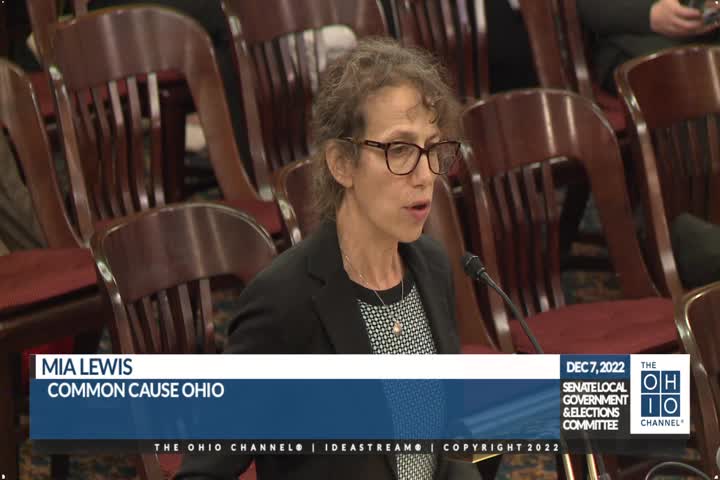Ohio election laws face scrutiny over accessibility and security
December 07, 2024 | Local Government and Elections Committee, Senate, Committees, Legislative, Ohio
This article was created by AI summarizing key points discussed. AI makes mistakes, so for full details and context, please refer to the video of the full meeting. Please report any errors so we can fix them. Report an error »

During a recent government meeting, discussions centered on the complexities of Ohio's election processes and the potential impacts of legislative changes on voter accessibility. Key points raised included the lack of centralized data on ballot acceptance after election day, which complicates efforts to understand voter behavior and accessibility issues.
Participants highlighted the need for research into various aspects of voting, such as the use of curbside voting by individuals who may not have physical disabilities but are immunocompromised, and the challenges faced by voters requesting absentee ballots close to election day. The conversation underscored the importance of understanding how changes in election law deadlines could affect different voter demographics, including active duty military personnel.
A committee member emphasized that small barriers in election law can significantly hinder voter participation, often more than a lack of enthusiasm for the election itself. This sentiment was echoed in a call for comprehensive research to identify these barriers and their effects on voter turnout across all 88 counties in Ohio.
The meeting also featured testimony from Colin Morosi, deputy policy director of the ACLU of Ohio, who expressed opposition to House Bill 458. Morosi affirmed that Ohio's current voter ID framework effectively balances security, accessibility, and efficiency, reflecting the expectations of Ohioans regarding their election system.
As discussions continue, the committee aims to gather more data and insights to inform future legislative decisions that could enhance voter participation and streamline the electoral process in Ohio.
Participants highlighted the need for research into various aspects of voting, such as the use of curbside voting by individuals who may not have physical disabilities but are immunocompromised, and the challenges faced by voters requesting absentee ballots close to election day. The conversation underscored the importance of understanding how changes in election law deadlines could affect different voter demographics, including active duty military personnel.
A committee member emphasized that small barriers in election law can significantly hinder voter participation, often more than a lack of enthusiasm for the election itself. This sentiment was echoed in a call for comprehensive research to identify these barriers and their effects on voter turnout across all 88 counties in Ohio.
The meeting also featured testimony from Colin Morosi, deputy policy director of the ACLU of Ohio, who expressed opposition to House Bill 458. Morosi affirmed that Ohio's current voter ID framework effectively balances security, accessibility, and efficiency, reflecting the expectations of Ohioans regarding their election system.
As discussions continue, the committee aims to gather more data and insights to inform future legislative decisions that could enhance voter participation and streamline the electoral process in Ohio.
View full meeting
This article is based on a recent meeting—watch the full video and explore the complete transcript for deeper insights into the discussion.
View full meeting
